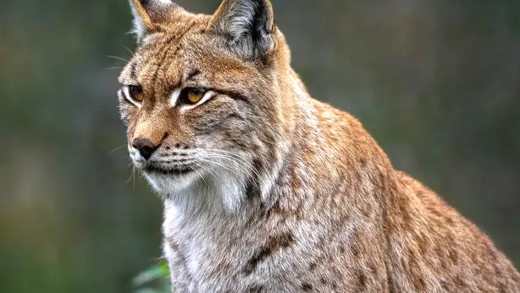Tyrannosaurus rex, known as T. rex, was a colossal predator with a significant role in its ecosystem. Evidence from fossils reveals its physical characteristics and diet. T. rex influenced herbivore populations and supported a diverse environment. Surprisingly, modern birds are its closest living relatives, showcasing the evolutionary link between dinosaurs and today’s avian species.
Tyrannosaurus rex Meaning
Tyrannosaurus rex, commonly known as T. rex, is a name that evokes images of a colossal predator. The name itself comes from Greek and Latin roots: “Tyrannos” means “tyrant” in Greek, and “saurus” translates to “lizard” in Latin. Thus, the name Tyrannosaurus rex signifies “tyrant lizard.” This name reflects the dinosaur’s status as one of the largest and most fearsome carnivores of its time.
Understanding the significance of the name T. rex helps us appreciate its role in prehistoric ecosystems. As a top predator, it dominated its environment and influenced the evolutionary paths of other species. The fascination with T. rex extends beyond its name; it embodies the quintessential image of dinosaurs in popular culture, from movies to museum exhibits.
Physical Appearance of Tyrannosaurus rex
The physical appearance of Tyrannosaurus rex is nothing short of awe-inspiring. T. rex stood approximately 12 feet tall at the hips and could reach lengths of up to 40 feet. Its massive skull, equipped with powerful jaws, was filled with large, serrated teeth—ideal for crushing bone and tearing flesh.
Some key features of T. rex include:
- Powerful Legs: T. rex had strong hind limbs, allowing it to run at impressive speeds for its size.
- Short Arms: Its tiny, yet muscular arms had two clawed fingers, which may have been useful for grasping prey.
- Heavy Tail: The long, heavy tail provided balance and support while running.
This unique combination of features made T. rex not only a formidable predator but also an efficient hunter in the diverse ecosystems of its time.
Size of Tyrannosaurus rex Compared to Other Dinosaurs
When comparing the size of Tyrannosaurus rex to other dinosaurs, it clearly stands out as one of the largest terrestrial carnivores. While many dinosaurs existed, few reached the same scale. For instance, the long-necked Brachiosaurus could reach heights of 40 feet, but T. rex was heavier, weighing between 9 to 14 tons.
Key comparisons include:
- Stegosaurus: A well-known herbivore, it was significantly smaller, averaging around 30 feet in length.
- Spinosaurus: Another large carnivore, it was longer than T. rex but likely lighter due to its aquatic adaptations.
- Allosaurus: A smaller predator, Allosaurus averaged around 28 feet long and weighed about 2.5 tons.
These comparisons highlight T. rex’s formidable size and its role as a top predator in the Late Cretaceous period.
Diet of Tyrannosaurus rex
Tyrannosaurus rex was a formidable predator with a diet primarily consisting of large herbivorous dinosaurs. Its powerful jaws and serrated teeth were designed for slicing through tough flesh and bone. Common prey included dinosaurs like Triceratops and Edmontosaurus. These massive animals provided the caloric intake necessary for T. rex to thrive.
Some notable aspects of its diet include:
- Scavenging Behavior: While T. rex is often depicted as a hunter, evidence suggests it may have also scavenged carcasses.
- Bone Crushing: Its teeth were not just for tearing flesh; they could crush bone, allowing T. rex to access nutritious marrow.
- Hunting Strategy: T. rex likely employed ambush tactics, using its size and strength to overpower prey.
This carnivorous diet placed T. rex at the top of the food chain, playing a critical role in the ecosystem by controlling herbivore populations and influencing the dynamics of its habitat.
Habitat of Tyrannosaurus rex
The habitat of Tyrannosaurus rex was diverse, primarily consisting of forested areas, floodplains, and open plains during the Late Cretaceous period. This environment provided ample food sources and space for hunting. Fossil evidence indicates that T. rex roamed areas that are now parts of North America, particularly in regions like Montana and South Dakota.
Key features of T. rex’s habitat include:
- Diverse Flora: The lush vegetation supported a variety of herbivores, ensuring a stable food supply for predators.
- Climate: The climate was generally warm and humid, conducive to the growth of large plant species.
- Geological Features: Rivers and lakes provided water sources and attracted prey, creating dynamic ecosystems.
Understanding the habitat of T. rex helps in visualizing its lifestyle and adaptations, showcasing how it was perfectly suited for its environment.
Timeline of Tyrannosaurus rex Existence
Tyrannosaurus rex existed during the Late Cretaceous period, approximately 68 to 66 million years ago. This timeline places T. rex towards the end of the age of dinosaurs, just before the mass extinction event that wiped out the majority of species on Earth.
Significant points in T. rex’s timeline include:
- Emergence: T. rex first appeared about 68 million years ago, evolving from earlier theropods.
- Peak Dominance: T. rex became one of the dominant predators during the late stages of the Cretaceous, thriving until the very end.
- Extinction: Around 66 million years ago, T. rex and many other species faced extinction, likely due to a catastrophic asteroid impact.
This timeline highlights the evolutionary success of T. rex and its role in the prehistoric world, marking it as a key player in the ecosystem just before the dramatic changes that led to the end of the dinosaurs.
Interesting Facts about Tyrannosaurus rex
Tyrannosaurus rex is a dinosaur that has captivated the imagination of many, and it comes with a treasure trove of fascinating facts. For instance, did you know that T. rex had one of the strongest bites of any terrestrial animal? Its bite force is estimated to be over 12,000 pounds, enough to crush bone with ease!
Here are more intriguing tidbits about T. rex:
- Short Arms: Despite its massive size, T. rex had relatively short arms, which has led to much speculation about their purpose.
- Coloration: The actual color of T. rex is still a mystery, but scientists believe it may have had a feathered coat in its younger years.
- Social Behavior: Some evidence suggests that T. rex may have exhibited social behaviors, potentially hunting in groups.
These facts not only highlight the unique characteristics of T. rex but also the ongoing research that continues to unveil the mysteries of this incredible dinosaur.
How We Know About Tyrannosaurus rex
Tyrannosaurus rex has become an icon of paleontology, but how do we know so much about this dinosaur? The evidence primarily comes from fossil remains discovered in North America. Paleontologists have unearthed numerous skeletons, teeth, and tracks, which provide crucial insights into T. rex’s biology and behavior.
Key sources of evidence include:
- Fossilized Bones: Over 30 T. rex skeletons have been found, some nearly complete, allowing scientists to reconstruct its physical structure.
- Teeth Analysis: The size and shape of T. rex teeth help determine its diet and hunting techniques.
- Trace Fossils: Footprints and coprolites (fossilized feces) reveal information about T. rex’s movement and feeding habits.
- Comparative Anatomy: By studying the similarities and differences between T. rex and its relatives, scientists can infer its evolutionary history.
This scientific evidence paints a picture of T. rex as a fierce predator, giving us a glimpse into its life millions of years ago.
The Ecosystem Role of Tyrannosaurus rex
Tyrannosaurus rex played a vital role in its ecosystem as an apex predator. By controlling herbivore populations, T. rex helped maintain the balance within its environment. This predatory behavior influenced the evolutionary paths of various species, promoting biodiversity.
Key impacts of T. rex on its ecosystem include:
- Population Control: By preying on large herbivores, T. rex prevented overgrazing, allowing plant life to thrive.
- Scavenging Opportunities: T. rex’s presence also benefited scavengers, as it would leave behind carcasses for smaller predators and scavengers to feed on.
- Habitat Diversity: The hunting strategies of T. rex likely shaped the behaviors and adaptations of other species, fostering a dynamic ecosystem.
Thus, T. rex was not just a fearsome predator; it was a crucial component of the Late Cretaceous ecosystem.
Modern-Day Relatives of Tyrannosaurus rex
Surprisingly, Tyrannosaurus rex has living relatives today. Birds are considered the closest relatives of theropod dinosaurs like T. rex. This connection is supported by shared characteristics such as hollow bones and certain aspects of feather development.
Key points regarding T. rex’s modern relatives include:
- Birds as Descendants: Birds evolved from small theropods, making them the only lineage of dinosaurs that survived the mass extinction event.
- Genetic Studies: DNA analysis shows similarities between T. rex and modern birds, further solidifying this connection.
- Behavioral Parallels: Some behaviors observed in birds, such as nesting and parental care, may have roots in their dinosaur ancestors.
Recognizing these relationships emphasizes the fascinating evolutionary journey from the mighty T. rex to the birds we see today.





Comments are closed.